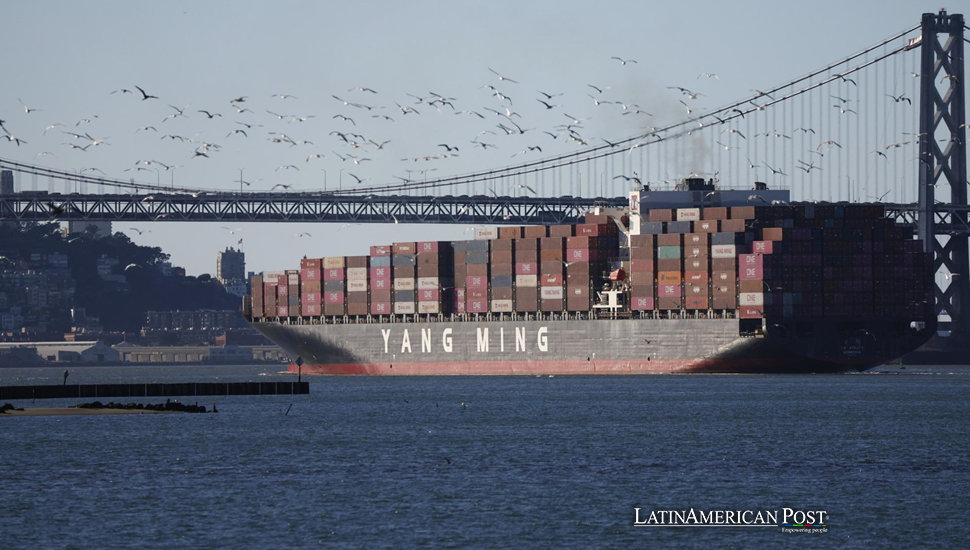China Expands Maritime Influence Across Latin America

China is increasing its dominance in Latin America’s maritime sector, flooding the region with crane exports and investing heavily in port infrastructure. These actions are connected to Beijing’s Belt and Road Initiative and challenge U.S. influence as trade tensions rise.
A Surge in Chinese Cranes
China’s exports of cranes to Latin America have skyrocketed, reflecting Beijing’s growing presence in the region’s infrastructure projects. According to Chinese customs data, crane exports to Latin America surged by 47% year-on-year in the first 10 months of 2024.
Peru and Mexico are among the biggest recipients of this surge. In Peru, crane exports rose by nearly 132% in October alone, contributing to a total shipment value of $143 million for the year. In Mexico, the increase was even more dramatic, with exports growing by 193% year-on-year and spiking by 1,202% in August.
One of the most striking examples is China’s monumental investment in Peru’s Chancay container mega port, inaugurated during President Xi Jinping’s visit earlier this month. This port, a key part of China’s Belt and Road Initiative, is a testament to China’s grand ambitions in Latin America. With the potential to shorten shipping times between Shanghai and Peru by up to 12 days and reduce logistics costs by 20%, this project underscores China’s determination to become a dominant force in the region’s trade networks.
Beijing’s Port Investments Transform the Region
China’s state-owned Shanghai Zhenhua Heavy Industries leads in ship-to-shore cranes. The company controls 70% of the market. This is significant. In Latin America, the company plays an important role. This role highlights the bigger goals of the Belt and Road Initiative. The initiative tries to improve global connectivity with infrastructure projects.
In Panama, home to the world-renowned Panama Canal, China’s crane exports soared by an extraordinary 1,150% year-on-year in the first 10 months of 2024. June alone saw a staggering 5,497% increase, driven by a surge in port construction. In the last three months, Shanghai Zhenhua sent 18 cranes to Panama. These cranes improve their shipping infrastructure. This action strengthens China’s important position in the area. These events are not alone. Reports say China put money into port projects in 16 of the top 20 countries for shipping connections. Over a quarter of global container trade in 2023 is passed through terminals partially owned or controlled by Chinese firms.
Rising Tensions with the United States
China’s growing influence in Latin America’s maritime sector comes amid rising tensions with the United States. Washington worries about Chinese port cranes having surveillance systems. As a result, a 25% penalty tariff now affects Chinese ship-to-shore cranes entering the U.S.
The tariff started in September. Already, it has cut Chinese exports to the U.S., nearly 66% smaller than last year. ) The new U.S. president, Donald Trump, will ramp up these measures, even proposing a 25% tariff on Mexican imports. This could target Chinese exports going through Mexican ports to bypass direct duties.
Analysts caution that U.S. policies might further harm relationships with Latin America. In this region, China’s investments are seen as very helpful for infrastructure and trade. There is also talk that the U.S. could try blocking products from China-invested ports like Chancay, possibly creating new trade barriers.
The Future of Latin American Ports
China’s strategic investments in Latin American ports are reshaping global trade dynamics. By funding and building important infrastructure, Beijing secures trade routes and strengthens its influence around the world.
This rapid expansion carries significant risks and rewards. As Beijing deepens ties with Latin America, it faces challenges from the U.S. and other powerful nations. The risk of higher tariffs, trade restrictions, or political backlash is real, particularly with the Trump administration focusing on limiting China’s influence. However, the potential for economic growth and improved trade abilities is also substantial, making the decisions facing Latin American countries weighty and significant.
For Latin American countries, Chinese investments present opportunities and problems. Improved infrastructure promises economic growth and better trade abilities. However, there are concerns about long-term reliance on Chinese money and technology.
China’s presence in Latin America shows a bold plan to grow its power in a region traditionally influenced by the U.S. Beijing is investing in cranes, money, and construction in Latin American ports. It reshapes the region’s trade.
Also read : Mexico’s Labor Rights Showdown Underpins Modern Businesses
But the rivalry between the U.S. and China raises significant uncertainties about the future of global trade and the balance of power in Latin America. The direction of this change is uncertain. There might be growth or increased tensions. The impact of China’s actions is already evident, but the future remains uncertain, adding to the complexity and intrigue of the situation.




